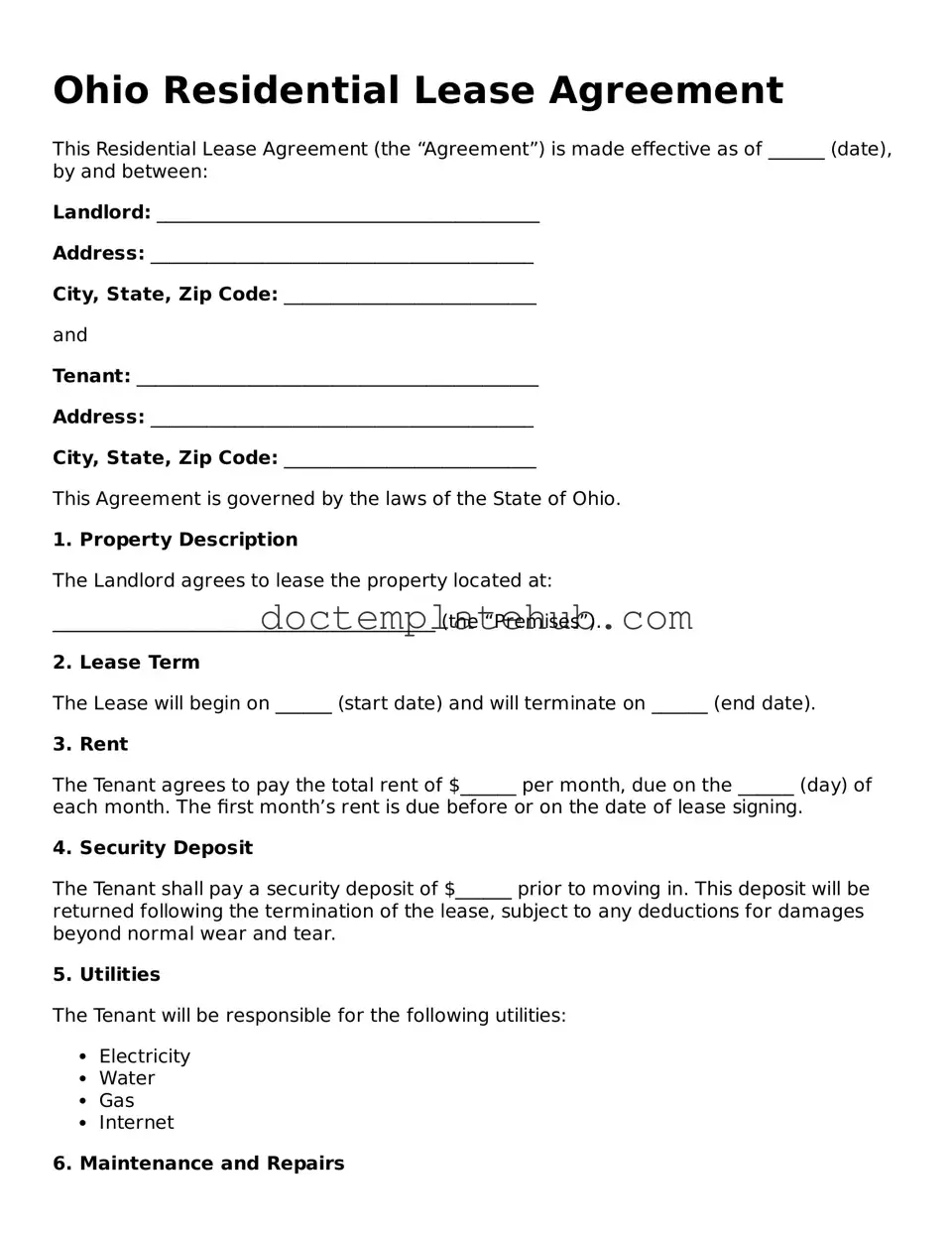What is an Ohio Residential Lease Agreement?
An Ohio Residential Lease Agreement is a legally binding contract between a landlord and a tenant. It outlines the terms and conditions under which a tenant may rent a residential property. This agreement typically includes details such as the rental amount, duration of the lease, security deposit requirements, and responsibilities of both parties.
What should be included in the lease agreement?
A comprehensive lease agreement should include several key components. These typically consist of the names of the landlord and tenant, the address of the rental property, the lease term (start and end dates), the monthly rent amount, payment due dates, and late fees. It should also cover security deposits, maintenance responsibilities, and rules regarding pets or smoking, among other provisions.
How long is a typical lease agreement in Ohio?
In Ohio, lease agreements can vary in length. The most common duration is one year, but landlords and tenants can agree to shorter or longer terms. Month-to-month agreements are also common, allowing for more flexibility. It is essential for both parties to clearly understand the lease duration to avoid misunderstandings.
Can a landlord increase rent during the lease term?
Generally, a landlord cannot increase rent during the lease term unless the lease specifically allows for it. Most leases lock in the rental amount for the duration of the agreement. However, landlords can adjust the rent once the lease expires, provided they give proper notice to the tenant as outlined in the lease agreement.
What happens if a tenant wants to break the lease early?
If a tenant needs to break the lease early, they may face penalties as outlined in the agreement. Many leases include clauses regarding early termination, which may require the tenant to pay a fee or continue paying rent until a new tenant is found. Open communication with the landlord can sometimes lead to a mutually agreeable solution.
Is a written lease agreement necessary?
While verbal agreements can be legally binding, a written lease agreement is highly recommended. A written document provides clear evidence of the terms agreed upon by both parties, reducing the risk of disputes. It also helps protect the rights of both the landlord and the tenant.
What should a tenant do if there are issues with the property?
If a tenant encounters issues with the property, such as maintenance problems or safety concerns, they should notify the landlord promptly. Most lease agreements require tenants to report issues in writing. Landlords are generally obligated to address significant problems in a timely manner to ensure the property remains habitable.
